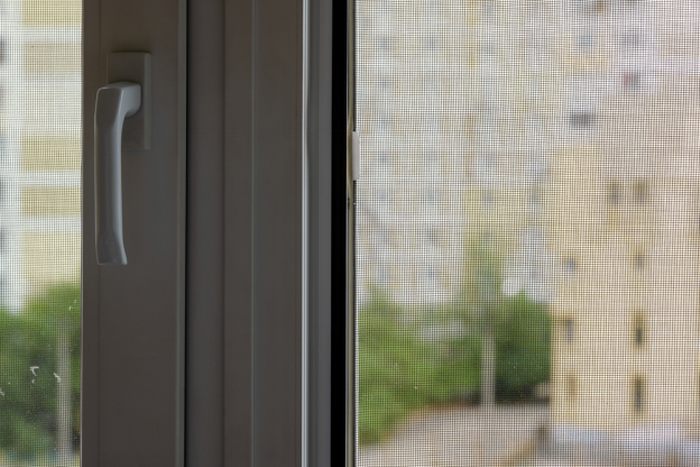There are many problems that can be brought to light after a home inspection. Click here to learn some common home inspection findings along with how to fix them.

Over 85% of American homeowners invest in insurance each year. This insurance doesn’t come cheap though. Premiums can range from around $600 a year right up to $2000.
Nevertheless, home insurance is a great way to protect your home and your financial investment in it against the elements.
But did you know that not all policies cover common home inspection findings? And these findings can cause extensive damage within your home if you leave them untreated. In fact, they might even make your premiums go up!
So how can you get on top of these potential threats to your home? Well, knowing what to look out for is a good place to start.
Read on to find out some of the most common home inspection problems and how to fix them!
1. Damaged or Broken Gutters
Your gutters are responsible for keeping excessive amounts of water away from your home. So any damage to them can lead to serious problems at home. Several things can stop your gutters from working properly.
If your gutters become bent then water can’t flow along them properly. When this happens the water may start to overflow rather than traveling down to the ground. Similarly, if your gutters become clogged with leaves and other debris then they will start to overflow.
But this isn’t the only thing that can go wrong with your gutters. If they don’t properly channel water away from your house then they aren’t doing their job.
If your gutters come away from the walls or roofing then they may end up sending water in the wrong direction. Or they might not catch the water at all!
You can keep your gutters in shape by checking on them regularly and clearing out leaves and other debris. In certain environments, like areas with lots of trees around, will mean that you need to clear your gutters out more frequently. And shady environments will encourage moss to grow in your gutters.
The deeper your gutters are, the more easily water will flow along them. So if you move into a new house make sure to check that they have decent gutters directing water to a sensible run-off area and that they’re all intact. You can also back up your gutters by installing splash pans.
2. Common Home Inspection Findings Include Faulty Electrics
One of the most common home inspection problems you’ll come across is electrical faults. This isn’t necessarily because they’re more common than other problems. But without specialist knowledge, it can be easy to miss them on a day-to-day basis.
And electric faults in your home can pose a serious threat to your personal safety. Faulty wiring is one of the top ten causes of fires in the home. Electrical faults include:
- Junction boxes without covers
- Mismatched amperage between devices
- Using no-wire nuts with wires
- Lack of overload protection
- Poorly and unprofessionally connected wiring
When it comes to fixing these faults you really need someone who knows what they’re doing. If this isn’t your area of expertise then you might want to get in an electrician.
In the meantime, check the junction boxes in your house and you’re using at least 100 amps throughout your property.
3. Broken Air Conditioning Units
When it comes to common repairs needed after a home inspection you might not think about your air conditioning units. But these play an important role in home maintenance.
You’re probably already aware of the benefits you feel on a daily basis. They keep your home cool in summer which means you stay more hydrated and can get better sleep at night. And living in a cool environment can also help you to focus better on tasks while you’re at home.
But air conditioning units also look after the rest of your house. They reduce the number of insects or parasites living in your house by making it a less hospitable environment for them. And they can stop your electronics overheating in the height of summer.
So you should really make sure that your air conditioning units are in check. Consult your unit’s manual to get familiar with any warning light signals.
If your unit does stop working then you might not have the tools needed for this home inspection problem. At this point, have a look for air conditioning repair companies. This is a problem that affects the value of your home so it’s money worth spending!
4. Damp Issues
Damp issues are a huge problem for some houses and once damp sets in it can be very difficult to control. If you get on top of it as soon as possible then you’ll save yourself a hefty work bill in the future.
Damp happens when there isn’t enough ventilation and moisture gets into a building’s materials. This might be from a leak or it can happen if the walls aren’t properly insulated. Signs of damp include:
- Water staining on the walls
- A powdery or flakey residue on the walls
- Mold
- Mildew
- Signs of leaking
Often these signs of damp will appear lower down on the walls, to begin with. Or if your damp comes from a leak in the attic then it will appear in the top corners of your rooms. Basements are places which often encounter damp problems so they need proper maintenance.
And damp isn’t just unpleasant to look at. It can also cause serious health problems. The spores from damp mold can contribute to respiratory conditions and make you more susceptible to allergies.
Furthermore, if damp goes untreated then it can damage the structure of your house and lead to subsidence. This will make your property almost impossible to sell and it’ll send your insurance premiums skyrocketing.
To get rid of damp then you will have to remove large sections of housing materials and refill them with non-damp material. Or if you can’t do this then you can stop damp spreading using special sealing paint.
But addressing the cause of damp is one of the best ways to get rid of it for good. If you have a leak in the roof then make sure that this is fixed. And ensure you have proper surface drainage around your house to avoid basement damp.
5. Damaged Roof
We don’t need to explain how important your roof if to your home – after all, it protects it from the elements. But spotting damage on your roof on a daily basis can be challenging which is why it’s one of the most common problems for homes.
Damage to your roof could include missing or broken tiles or shingles. This often happens with time, as these pieces become brittle. They’re also exposed to the elements so wind and rain, wear them down over time.
Moss growing on your roof can also make it more susceptible to damage. And you should keep an eye on areas around chimneys or skylights as well. These can become weak-points in the roof.
Fortunately, they aren’t difficult to replace. You can replace tiles individually or in whole patches.
If you find that a lot of tiles are coming off then you may need to get your whole house re-roofed. This sounds like a big job and involves replacing the flashings under your tiling. But once it’s done you’ll have a new roof, free of problems.
6. Jamming Doors

We’ve all had a door that jams – it needs a bit of an extra kick at the bottom to get it into place. Or you have to pull extra hard to get it out of the frame.
This doesn’t always feel like a big problem but it can create security issues for your home. And it could put potential buyers off purchasing your property. After all, they might take this as a sign that the home hasn’t been properly cared for.
Wooden doors often jam in their frames because their wood absorbs tiny amounts of moisture and expands over time. This means that they no longer fit properly where they used to!
Luckily, the solution for this is also fairly simple. You have two options.
One involves taking the door and the jamb (or frame) off the wall and widening the frame. This might sound complicated by any experienced builder should know how to do it. They’ll have your door back in the frame within a few hours!
But your other option is even quicker. This involves slicing the door down to size so it fits in the frame better. But remember, for a decent finish you will also need to sand and repaint the door before you put it back on its hinges.
To avoid your wooden doors expanding over time, make sure to keep your property well-ventilated.
The Bottom Line
The sooner that you get on top of these common home inspection findings, the less damage they can do to your property. This is extremely important for keeping your home feeling comfortable and holding its value.
So don’t wait around. Keep scrolling our site for more tips on how to get the most out of your property today!








